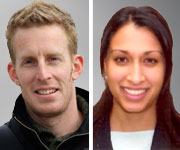IT is that time of year again — around Australia, final-year medical students and junior doctors are opening emails to discover the rotations that they’ve been allocated for the next year.
For most, a rotation in aged care will be met with disappointment.
The irony is clear, as most doctors will be treating elderly patients regularly throughout their careers. Why, with such foreseeable demand, does aged care remain at the bottom of the list for almost all junior doctors?
A recent survey conducted by the AMA revealed that the medical workforce in aged care is itself ageing and those doctors are starting to reduce the services they provide to older Australians.
Of the doctors who provide visits in residential aged care facilities only 8% are aged less than 40 years, and these services are not being taken up by a younger generation of doctors.
But why is this the case? Why are junior doctors choosing other career paths?
Fundamentally, aged care has an image problem. Medical students and junior doctors remain true to the aspirations that led them to their medical careers in the first place. Invariably these aspirations are more likely to be focused on saving lives with neurosurgery, delivering babies or changing the lives of thousands of people in resource-poor countries rather than adjusting diuretic doses in an outer suburban nursing home.
However, the problem is more complex. Poor remuneration for visits to residential aged care facilities provides inadequate recompense for the lost productivity of leaving practice rooms. This is clear when aged care incomes are compared with that of procedural specialties or procedural aspects of general practice.
This, coupled with busier practices, more paperwork and red tape, inadequate support and lack of registered nurses in residential aged care facilities, makes delivering aged care unattractive to a new generation of doctors.
The rationale for career choice changes at some time during medical school when the hard slog and poor working hours of specialist training become reality. The arguments for less competitive specialty entry, shorter training, less on-call work and improved work–life balance become stronger as students and doctors find themselves further down the medical training pathway.
This is apparent in the increased popularity of specialties such as general practice in the later years of medical school and early prevocational training when compared to the career goals of junior medical students.
Perhaps the aspirational rewards alluded to earlier are present but less apparent in aged care. Doctors still provide life-changing care in this setting but at a far more subtle level.
Instead of the life-saving procedures it is the life-changing communication regarding end-of-life care and relocating to supported accommodation, and guiding patients through difficult decisions that provide examples of how much difference a doctor can make and the rewards that are possible in aged care.
Maybe, as with many things, it takes a degree of maturity and experience to discover this aspect of aged care delivery. This is demonstrated by the observation that junior doctors depart their aged care rotations with a very different perspective than their pre-existing expectations.
The myth of geriatrics being an extension of general medicine is quickly dispelled with the understanding that the doctors providing aged care are specialists in their own field; caring for patients with a range of cognitive, functional, social and psychiatric conditions.
Solutions to the aged care crisis require us to rethink the medical training paradigm. Exposing medical students and junior doctors to aged care settings can highlight the rewards of this career choice and raise the profile of providing appropriate medical care to older people.
One flagship program is the Victorian Geriatric Medicine Training Program. With goals such as increasing the awareness and interest of junior doctors in geriatric medicine, increasing training capacity and improving the quality of education in geriatric medicine, this program has succeeded in doubling the numbers of advanced trainees in geriatric medicine since 2007.
In fact, advanced training in geriatrics has become so popular that it is now one of the largest advanced training cohorts within the Royal Australasian College of Physicians. Other programs, such as the prevocational general practice placement program, are successfully under way and pilot terms in aged care planned. Perhaps the trends, particularly in general practice aged care, can be reversed.
Exposing junior doctors to aged care early is but one of a suite of solutions that will be needed to solve the evolving shortfall of doctors providing quality aged care.
Further commitment to these programs and broader solutions addressing the systemic issues identified by research such as the AMA survey are required to ensure that older Australians receive the health and medical care they need and deserve.
Dr Will Milford is a senior obstetrics registrar at Redcliffe Hospital and chair of the AMA’s Council of Doctors-in-Training. Dr Tamsin Santos is a fellow of the Victorian Geriatric Medicine Training Program.
Posted 15 October 2012

 more_vert
more_vert
I can’t help feeling that there might be a great abyss of knowledge when it comes to the question of the use of supplements in aged patients. Good knowledge of nutrition and understanding of the failing metabolism of the aged is essential yet in my estimation inadequately addressed.